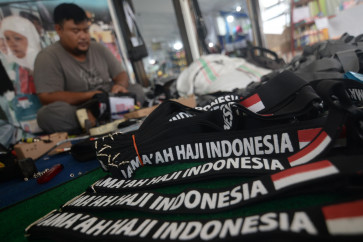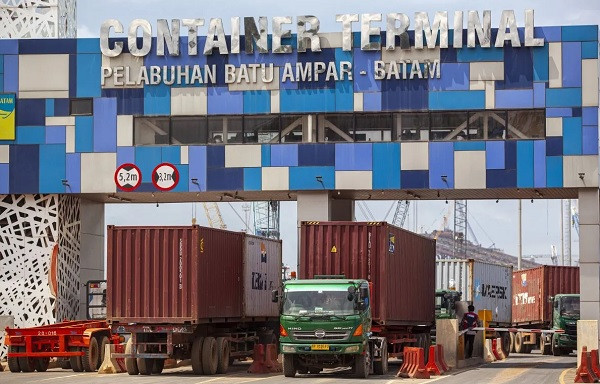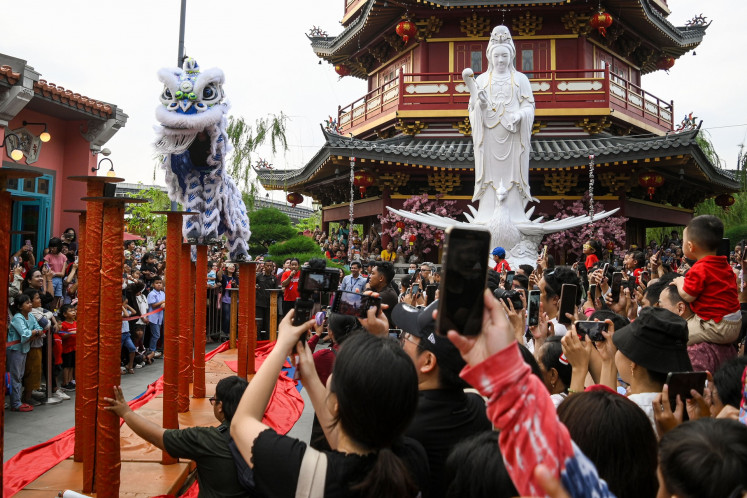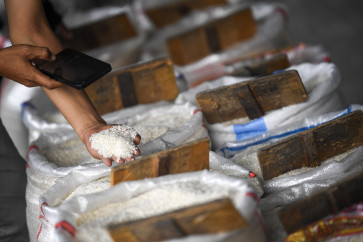Navigating challenges, strategies in Indonesia’s rice market
The price of rice has thus far risen by 19.38 percent in urban areas and 23.04 percent in rural areas. This disparity underscores the impact of the complex supply chain on rice affordability in Indonesia relative to its developing counterparts.
Change text size
Gift Premium Articles
to Anyone
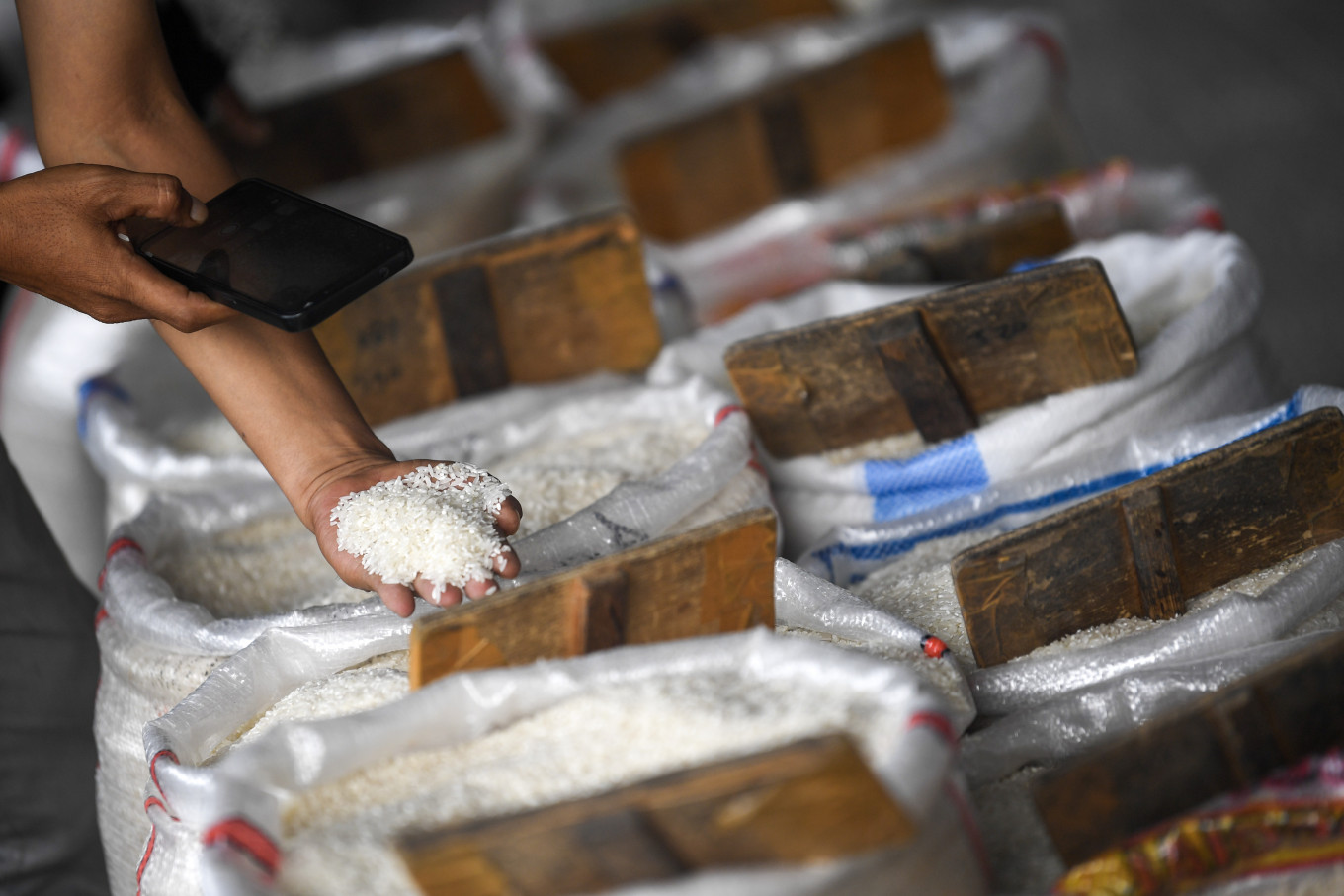 A customer checks on rice sold at a stall in Cipinang rice market in Jakarta, on March 13, 2024. (Antara/M Risyal Hidayat)
A customer checks on rice sold at a stall in Cipinang rice market in Jakarta, on March 13, 2024. (Antara/M Risyal Hidayat)
T
he multitude of intermediaries between farmers and consumers has significantly contributed to the highest rice prices in recent Indonesian history. As reported by Statistics Indonesia (BPS), as of February 2024, the price of premium rice in Indonesia fluctuated at Rp 14,525 (90 US cents) per kilogram. This represented an 8.82 percent rise compared with December 2023 and a substantial surge of approximately 22.91 percent compared with prices in February 2023.
The price of rice has thus far risen by 19.38 percent in urban areas and 23.04 percent in rural areas. This disparity underscores the impact of the complex supply chain on rice affordability in Indonesia relative to its developing counterparts. These complexities include inadequate transportation infrastructure, lack of storage facilities and difficulties in coordination among various actors in the supply chain. These challenges result in delays, inefficiencies and increased costs, all of which contribute to the higher prices of rice. The lack of advantages available to rice farmers is another significant factor contributing to the surge in rice prices. This can be seen in the research conducted by Ceballos, Hernandez, Minot and Robles, who emphasize that the world rice market is characterized by an unstable and unreliable supply.
The research highlights two primary factors contributing to low rice production in Indonesia: a sluggish mechanization process and limited investment in research and development (R&D) spending. Dawe, Timmer and Warr emphasize the Agriculture Ministry's inaccurate data on rice production, attributing this to estimation issues. Both the BPS and the ministry utilize crop-cutting surveys and the “eye estimate” approach to assess cultivated areas, leading to overestimations.
Studies reveal significant overestimations, with a 17 percent overestimation of rice production and harvest area during the 1996-1997 period and a 13 percent overall overestimation in total rice production during the 2000-2001 period, as identified by the Japan International Cooperation Agency (JICA). The fluctuation in production levels is exacerbated by changes in seasonal patterns. Ansari et al. point out Indonesia's vulnerability to climate change, evident in the prolonged drought experienced in 2024, causing delays in the harvesting period. This disruption, coupled with an increase in rice demand driven by the political cycle, intensified pressure on an already strained supply chain. Legislative candidates, aiming to enhance their electoral appeal, purchased rice in bulk for distribution as donations to the electorate, further straining the supply chain and exacerbating demand pressures.
Indonesia has deployed four principal strategies to counteract these rising costs: market operations, the Rice for the Poor (Raskin) program, domestic procurement and imports. Notably, Raskin distinguishes itself from the other initiatives by not directly influencing market dynamics. It instead is exclusively dedicated to enhancing the accessibility of rice for impoverished families by providing subsidized rice to low-income households, thereby ensuring their food security.
Conversely, through market operations, the government endeavors to maintain rice prices at a stable level by releasing specific quantities of rice to the market at predetermined prices. This strategic intervention aims to achieve price stability and guarantees that rice remains within the financial reach of the general population. Domestic procurement as a strategy to address rice supply issues is typically invoked only under specific circumstances, primarily when the challenge lies only on the demand side.
For domestic procurement to function effectively, it requires at least one or more provinces to have a surplus of rice that can be reallocated to provinces experiencing deficits. This approach is generally more viable in situations characterized by demand fluctuations rather than production shortfalls. The last resort often involves importing rice from neighboring countries, such as Thailand and Vietnam. Importation aims to moderate domestic market prices, leveraging the historically lower cost of imported rice compared with domestic production to achieve price stabilization. Nonetheless, the importation can be politically sensitive due to its potential impact on domestic agriculture and farmers, who face competition from cheaper imported rice. Consequently, regulations around rice imports are frequently designed to safeguard domestic agriculture and maintain food security by minimizing reliance on external sources.


